Moira Butterfield's Blog, page 46
January 22, 2017
Beyond the Doughnuts by Nicholas John Frith (Guest Blogger)
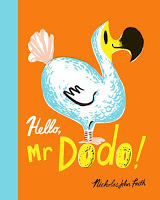 Published in the UK
Published in the UK by Alison Green Books, 2016Welcome to our guest at the Picture Book Den: author and illustrator Nicholas John Frith. His first book, Hector and the Hummingbird, had us grinning and won the Klaus Flugge Prize for most exciting newcomer to picture book illustration in 2016. Now Nicholas muses (or in his words, ‘brain spews’!) on his second book, Hello Mr Dodo!
I’m not entirely sure where the idea, for my latest picture book, Hello, Mr Dodo!, came from. But it was all in there somewhere, when I was reading a newspaper article about the discovery of a flightless bird, in New Zealand, that had previously been considered ’extinct’; watching 'The Hunter', the Willem Defoe movie, about the rumour of the last Tasmanian Tiger and the planned exploitation of it; growing my interest in birds and the natural world; and reflecting on my own childhood summers.
Hello, Mr Dodo! is pretty new to the shelves, but I am pleased when I hear people are noting the underlying themes of the story, beyond the bright doughnuts and advertised ‘friendship’ tale. Many of those themes were influenced by my thoughts on the material listed above and are what really drove the project forward within me.
“Martha was cuckoo about birds.”
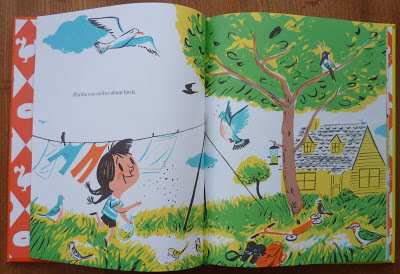
That’s how the story begins. And from the very first draft, that’s how it always began. I love a bit of word play. At one point there were a good handful of bird-related puns in the text. Although they didn’t all make it past my editor (Alison Green), it was a still bit of a lark!
The story didn’t change much during the process of making the book. It always began and ended pretty much the same way as it does. With only the timings of when Martha realises the bird is actually a dodo, and the where-and-when of the secret being let slip, shifting in the narrative.
As I dug deeper into the history of the dodo, I realised just how little was known about them. How much of it was vague, and how almost mythical they were. And therefore, how interesting liberties could be taken with the dodo, without stretching the truth too far.
They didn’t have to be living in Mauritius – as they had been put on boats by the Dutch. They could love eating doughnuts – as no one can disprove that they’d love these sweet fried treats!
One thing about the dodo ‘character’ that was paramount to me though, even within his friendship with Martha, was that ‘Mr Dodo’ remained a bird, an animal. Despite Martha’s engagement.
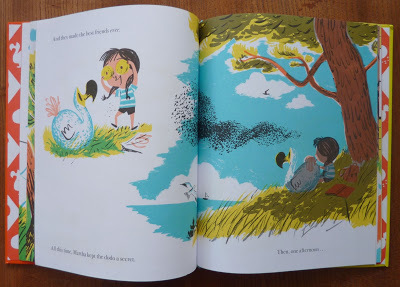
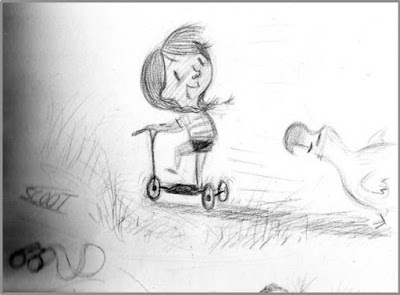
With the artwork, I wanted to embrace the opportunity to use bright spot (pantone) colours again, as I had with my debut, Hector and Hummingbird. And the summer setting was perfect for this. The dodo was a joy to draw too and I’m particularly pleased with his partially vacant demeanour.
When I start imagining the artwork for a book, I start imagining the entire book. The endpapers, the size, the paper type, the layout, the title page, the typography, and the extras. Extras that add another dimension to the book (and the story), like the KNOW YOUR BIRDS page at the back of Hello, Mr Dodo! or the SPOT THE JUNGLE ANIMALS in Hector and Hummingbird.
And I try to think of the feeling I’d have if I were holding the final book in my hands.
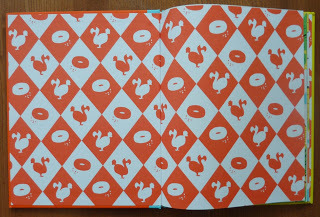 Endpapers: Hello, Mr Dodo!I strive to put across this importance, of the book as a whole. About how it makes us feel, as well as the story in the words.
Endpapers: Hello, Mr Dodo!I strive to put across this importance, of the book as a whole. About how it makes us feel, as well as the story in the words. If it were up to me I’d love it if the ‘lead’ edition of my books were always hardbacks.
Talking of hardbacks… Hello, Mr Dodo! will be published (in hardback) in the USA later this month, by Arthur A. Levine Books. Which I’m excited about.
Anyhow.
Thanks to Picture Book Den for the opportunity to brain spew (my words, not theirs) on their blog. It’s really just been snippets of reflection on my latest book.
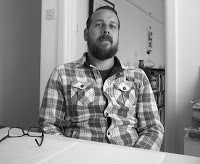 Cheers
Cheers Nicholas
One last thing… A good friend of mine recently mentioned that, since reading Dodo, his young son now starts on, incessantly, about wanting doughnuts each time he sees an image of a dodo! So, I’m sorry, if this happens to you too. But the fact is, dodos love doughnuts! Ask Martha, she’ll tell you the same.
Published on January 22, 2017 23:30
January 15, 2017
Why I hope the 10th Children’s Laureate will champion non-fiction • Jonathan Emmett

If past years are anything to go by, BookTrust will soon be encouraging people to suggest candidates for the next Children’s Laureate.
The current laureate Chris Riddell has worked wonders in the role, energetically waving the banner for children’s literature with one hand while deftly drawing an endless stream of characterful illustrations with the other. When Riddell first took on the Laureateship he announced that his focus would be to “use the immediacy and universality of illustration to bring people together and lead them all into the wonderful world of books and reading, whilst championing creativity in schools and beyond”.
Illustration was also the focus of Quentin Blake and Anthony Browne’s laureateships, while other laureates chose to focus on other areas that play a key role in engaging young readers including poetry, storytelling, performance, the importance of libraries, daily reading and parents reading aloud. However one key area of children's literature that has yet to be championed by a laureate is children’s non-fiction. So I’d like to suggest that the tenth Children’s Laureate should be a non-fiction author or illustrator.
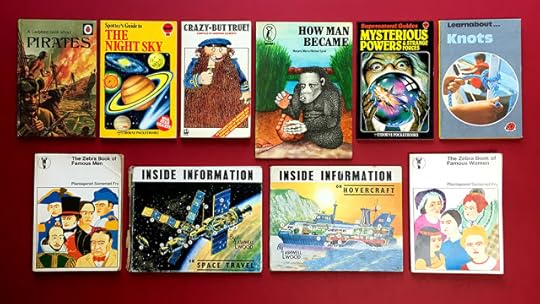 Some of the non-fiction books that helped turn me into a lifelong reader.
Some of the non-fiction books that helped turn me into a lifelong reader.I’m principally a fiction author but, like many children of my generation, non-fiction played a critical role in establishing my reading habit and turning me into a lifelong reader. When I was growing up in the 1960s and 70s the children’s sections of bookshops and libraries were as well stocked with non-fiction titles as they were with storybooks. Mainstream publishers like Ladybird excelled at publishing books that reflected the most obscure childhood interests and enthusiasms, from crochet to car mechanics. By responding to the breadth and diversity of children’s interests in this way, non-fiction books were often able to engage the reluctant readers that fiction could not reach.
 From crochet to car mechanics, publishers like Ladybird excelled at reflecting the breadth and diversity of childhood interests.
From crochet to car mechanics, publishers like Ladybird excelled at reflecting the breadth and diversity of childhood interests.The children’s book market has changed a lot since then. It’s now far bigger, and far less balanced in terms of fiction and non-fiction. While children’s books about crochet and car mechanics are still being published, a child interested in either – or any other non-mainstream non-fiction topic – is far less likely to discover them in a landscape dominated by children's fiction. Non-fiction has become the Cinderella of children’s publishing and many children who might otherwise have become readers are turning their backs on books because of this.
There is a growing acceptance of the need to redress the balance and promote children’s non-fiction more effectively. Campaigns like FCBG’s Non-Fiction November are already helping to do this, but there is still a long, long way to go. Appointing a non-fiction author or illustrator as the next Children’s Laureate would provide an invaluable boost to the profile of children's non-fiction and represent a huge step in the right direction. And many children that are initially hooked into reading by non-fiction go on to become avid fiction readers, so appointing a non-fiction Laureate could benefit children's fiction too.
I’ve been asking around for the names of non-fiction authors and illustrators who might make a good Laureate and some of the suggestions I received are shown below. It’s not meant to be a comprehensive list and I don't know if any of these people would be willing to take on the role, but I'm hoping it will help to set the ball rolling on a debate about who might fit the bill.
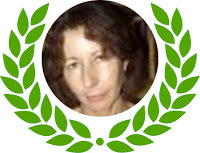 Catherine Chambers enjoys writing about history, cultures and religions, and reckons that sport can satisfy all three. Her books include Stickmen's Guide To The Sky - Uncovered and Goal! How Football Conquered the World
Catherine Chambers enjoys writing about history, cultures and religions, and reckons that sport can satisfy all three. Her books include Stickmen's Guide To The Sky - Uncovered and Goal! How Football Conquered the Worldhttp://www.lovereading4kids.co.uk/author/Catherine-Chambers/gd/Catherine-Chambers.html
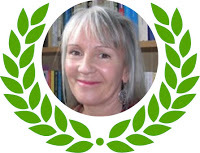 Nicola Davies is a zoologist and one of the original presenters of the BBC children's wildlife programme The Really Wild Show. Her books include A First Book of Nature, illustrated by Mark Herald and Poo: A Natural History of the Unmentionable, illustrated by Neal Layton.
Nicola Davies is a zoologist and one of the original presenters of the BBC children's wildlife programme The Really Wild Show. Her books include A First Book of Nature, illustrated by Mark Herald and Poo: A Natural History of the Unmentionable, illustrated by Neal Layton.http://www.nicola-davies.com
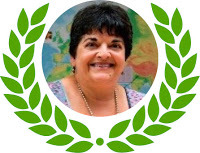 Anita Ganeri is the author of the award-winning Horrible Geography series including Planet in Peril which won the Blue Peter Book Award - Best Book with Facts 2009. Her other books include The Explorer’s Handbook: How to Be the Best Around the World.
Anita Ganeri is the author of the award-winning Horrible Geography series including Planet in Peril which won the Blue Peter Book Award - Best Book with Facts 2009. Her other books include The Explorer’s Handbook: How to Be the Best Around the World.https://en.wikipedia.org/wiki/Anita_Ganeri
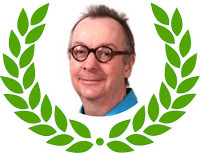 Richard Platt is the author of Pirate Diary, illustrated by Chris Riddell, which won the Blue Peter Book Award - Best Book with Facts 2003. Incredible Cross Sections, illustrated by Stephen Biesty, was selected by the Guardian as one of the three greatest children's books of the 90s.
Richard Platt is the author of Pirate Diary, illustrated by Chris Riddell, which won the Blue Peter Book Award - Best Book with Facts 2003. Incredible Cross Sections, illustrated by Stephen Biesty, was selected by the Guardian as one of the three greatest children's books of the 90s.http://www.richardplatt.co.uk
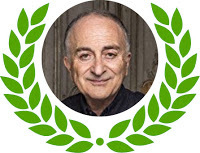 Tony Robinson came to fame playing the role of Baldrick in Blackadder. He has won the Blue Peter Book Award - Best Book with Facts award twice, for The Worst Children's Jobs in History, illustrated by Mike Phillips in 2007 and for Weird World of Wonders: World War II, illustrated by Del Thorpe in 2014.
Tony Robinson came to fame playing the role of Baldrick in Blackadder. He has won the Blue Peter Book Award - Best Book with Facts award twice, for The Worst Children's Jobs in History, illustrated by Mike Phillips in 2007 and for Weird World of Wonders: World War II, illustrated by Del Thorpe in 2014.https://en.wikipedia.org/wiki/Tony_Robinson
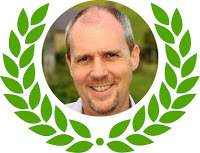 Andy Seed is the author of The Silly Book of Side-Splitting Stuff, illustrated by Scott Garret, which won the Blue Peter Book Award - Best Book with Facts 2015. His other non-fiction books include The Anti_Boredom Book of Brilliant things To Do, also illustrated by Scott Garret.
Andy Seed is the author of The Silly Book of Side-Splitting Stuff, illustrated by Scott Garret, which won the Blue Peter Book Award - Best Book with Facts 2015. His other non-fiction books include The Anti_Boredom Book of Brilliant things To Do, also illustrated by Scott Garret.http://www.andyseed.com
If you have any more suggestions, I’d love to hear them in the comments box below. If you’re on Twitter or Facebook, you could also tweet your suggestion for a possible non-fiction laureate using the #NonFictLaureate hashtag. With a bit of luck, we might just persuade the Laureate selection panel to appoint a much-needed Fairy Godmother to this Cinderella of children’s books.
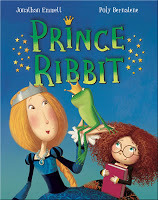 Although Jonathan Emmett has written a few non-fiction books, he is very lazy and so tends to write books where he can get away with making things up. His latest picture book Prince Ribbit, illustrated by Poly Bernatene, is the entirely fictitious story of a non-fiction-loving princess and a very cunning frog.
Although Jonathan Emmett has written a few non-fiction books, he is very lazy and so tends to write books where he can get away with making things up. His latest picture book Prince Ribbit, illustrated by Poly Bernatene, is the entirely fictitious story of a non-fiction-loving princess and a very cunning frog.Find out more about Jonathan and his books at his Scribble Street web site or his blog. You can also follow Jonathan on Facebook and Twitter @scribblestreet.
See all of Jonathan's posts for Picture Book Den.
Published on January 15, 2017 23:30
January 8, 2017
Celebrating Birthdays from Many Cultures • Chitra Soundar
I was born and raised in Chennai, a coastal city in South East India, in a very traditional family. We did not have TV until we were 14 and other than the BBC World Service and a bunch of Enid Blyton books that sounded magical, we were largely untouched by western influences until the late 1980s.
My birthdays were always celebrated in a traditional way. That was nice because I was able to celebrate twice – once on the lunar calendar based on the original lunar month and birth star in a Hindu calendar and once in the Western calendar 9th January (Yes it is today! Happy Birthday to me!).
I got to put on a new dress, my Granny would make an Indian sweet (whatever I asked for the previous night), I would be blessed by everyone in the family (we were a joint family – so uncles, aunts, cousins) and my Dad would give me a small extra allowance which I would cherish and save so I could buy stationery. (You can take the girl out of the stationery shop, but…)
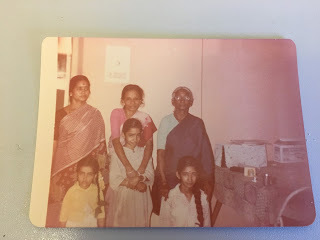 That's me on the far right kneeling in front of my GrannyIf the English birthday (ie, the one on the western calendar) happens to fall on a school day – I would be allowed to ditch the uniform and wear my new dress to school and I was expected to take a bag of sweets into school for the children and teachers.
That's me on the far right kneeling in front of my GrannyIf the English birthday (ie, the one on the western calendar) happens to fall on a school day – I would be allowed to ditch the uniform and wear my new dress to school and I was expected to take a bag of sweets into school for the children and teachers.
First birthdays are celebrated with ceremonies, prayers, a big feast and the entire clan turning up. Here is an invitation from 1972 inviting our family and extended family to my first birthday celebrations.
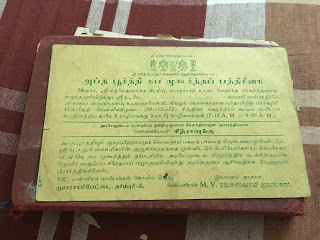
And here is a photo of my sister's first birthday in the traditional way with priests, ceremonies and a lot of smoke.
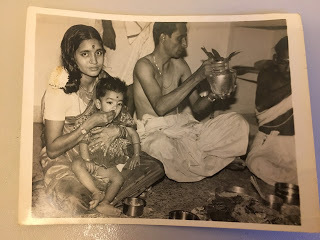 Sorry Sis!
Sorry Sis!
My nephews who are of mixed-race, have a bit of both worlds. We travelled to India and celebrated their first lunar birthdays in the traditional way with invitation and all. And they got their cake and party here in the UK with friends and family in the UK.
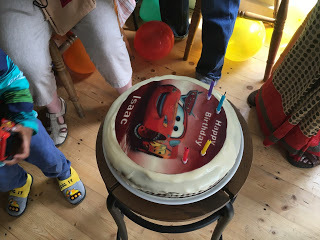 That's cake with my nephew's favourite car in the world - Lightning McQueen
That's cake with my nephew's favourite car in the world - Lightning McQueen
What has all this got to do with picture books you wonder? Well, I’ve been trying to get a picture book for my nephews (who are 4 ½ and 2 and are of mixed-race) that shows them what birthdays are for Indian families – not just the cake, the presents, the party with balloons and hats, but the quiet wisdom of elders, the whisper of a blessing, the touch of grandfather’s hand on his head wishing him every joy in the world forever and ever!
Unfortunately there are very few picture books currently in print, published in the UK that have another culture represented. Thanks to Frances Lincoln (and Janetta Otter-Barry) we have one from the amazing South African writer and illustrator Niki Daly.
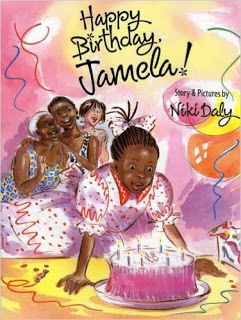 Niki Daly (Author and Illustrator) Published by Frances Lincoln in the UKTamarind Books published Kay's Birthday Numbers written by the wonderful Verna Wilkins (illustrated by Elaine Mills) in 1987 and I hope Verna brings it back as part of FireTree Books.
Niki Daly (Author and Illustrator) Published by Frances Lincoln in the UKTamarind Books published Kay's Birthday Numbers written by the wonderful Verna Wilkins (illustrated by Elaine Mills) in 1987 and I hope Verna brings it back as part of FireTree Books.
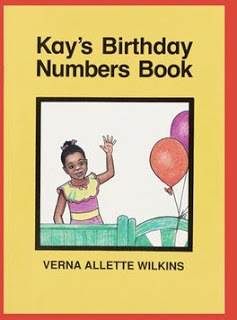 Verna Wilkins (Author) Elaine Mills (Illustrator) Published by Tamarind Books in 1987
Verna Wilkins (Author) Elaine Mills (Illustrator) Published by Tamarind Books in 1987
Another out of print birthday book is Gail's Birthday written by Katie Teague published by Magi Publications in 1995.
It is sad that there is so much choice on birthday books overall but so little that are diverse. The US fared a bit better. They do have a handful of Asian and Spanish birthday celebrations in picture books for children that grow up in those cultures.
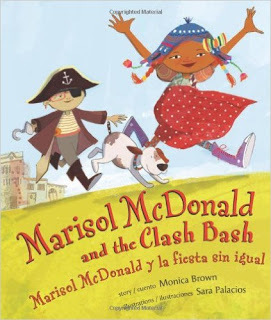 Monica Brown (Author), Sara Palacios (Illustrator) Published by Children's Book Press
Monica Brown (Author), Sara Palacios (Illustrator) Published by Children's Book Press
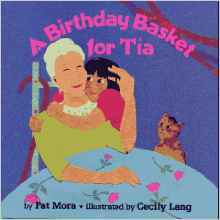 Pat Mora (Author), Cecily Lang (Author) Published by Prentice Hall &IBD
Pat Mora (Author), Cecily Lang (Author) Published by Prentice Hall &IBD
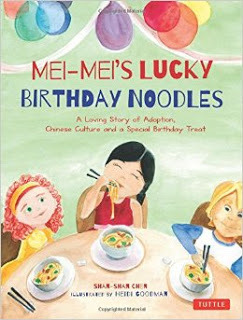 Shan-Shan Chen (Author) Heidi Goodman (Illustrator) Published by Tuttle Publishing
Shan-Shan Chen (Author) Heidi Goodman (Illustrator) Published by Tuttle Publishing
The Latin press Arte Publico has a children's imprint called Pinata Books for Children. It has published two birthday books in Latin families.
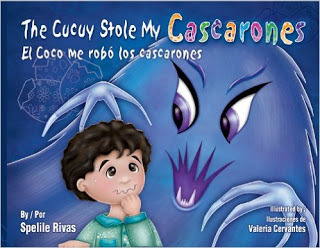 Spelile Rivas (Author), Valeria Cervantes (Illustrator) Gabriela Baeza Ventura (Translator)
Spelile Rivas (Author), Valeria Cervantes (Illustrator) Gabriela Baeza Ventura (Translator)
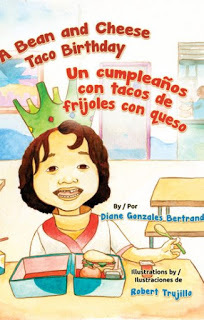 by Diane Gonzales Bertrand (Author), Robert Trujillo (Illustrator)
by Diane Gonzales Bertrand (Author), Robert Trujillo (Illustrator)
Then I found a non-fiction one from a long time ago, that celebrates birthdays around the world. Sadly I think it is out of print.
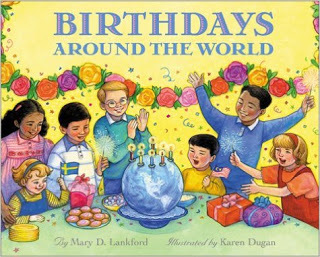 Mary D. Lankford (Author), Karen Dugan (Illustrator) published by Harpercollins
Mary D. Lankford (Author), Karen Dugan (Illustrator) published by Harpercollins
And finally here is a very new one from Nigeria, which I was happy to find and hope many more books come out of countries and communities with an inspiration to reach children of all backgrounds.
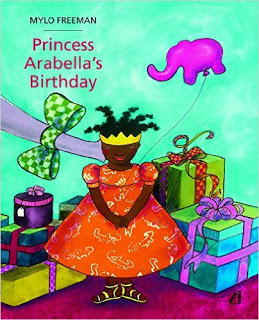 Mylo Freeman (Author) Published by Cassava Republic Press
Mylo Freeman (Author) Published by Cassava Republic Press
So I had accidentally stumbled into a gap which I had hoped would not exist. What should I do? What would any writer do? Fill it, of course. I've started dreaming up stories that are set in mixed-race families (that are part-Indian) that celebrates birthdays in a unique way - in a way that celebrates the customs and traditions of both the cultures these children straddle.
However I'm worried, I might have missed wonderful books that might have been published or translated into English. I'm not infallible, neither is my God - Google. So if you find any that I might have missed, please do share below.
I solemnly promise to create a list that I will share with librarians, schools and parents so that all children can read about birthday celebrations of their neighbours, friends and children across the world.
If like me, you're inspired to write a story of your own, that resonates with your extended family, a student in your school, a new neighbour from another country, here's something to start you off - a link that lists traditions across the world - http://www.birthdaycelebrations.net/traditions.htm.
(Be cautious, do verify them, it is after all "The Internet" where dubious trumps hang around!)
And here is one from the definitely-not-dubious but very amazing John Green on his Mental Floss channel.
And now please join me in singing Happy Birthday (in 7 different languages) to everyone celebrating their birthday on 9th January - Kate Middleton (you know her, right?), Morris Gleitzman (Australian children's author), Farah Khan, the Bollywood choreographer extraordinaire and of course me.
My birthdays were always celebrated in a traditional way. That was nice because I was able to celebrate twice – once on the lunar calendar based on the original lunar month and birth star in a Hindu calendar and once in the Western calendar 9th January (Yes it is today! Happy Birthday to me!).
I got to put on a new dress, my Granny would make an Indian sweet (whatever I asked for the previous night), I would be blessed by everyone in the family (we were a joint family – so uncles, aunts, cousins) and my Dad would give me a small extra allowance which I would cherish and save so I could buy stationery. (You can take the girl out of the stationery shop, but…)
 That's me on the far right kneeling in front of my GrannyIf the English birthday (ie, the one on the western calendar) happens to fall on a school day – I would be allowed to ditch the uniform and wear my new dress to school and I was expected to take a bag of sweets into school for the children and teachers.
That's me on the far right kneeling in front of my GrannyIf the English birthday (ie, the one on the western calendar) happens to fall on a school day – I would be allowed to ditch the uniform and wear my new dress to school and I was expected to take a bag of sweets into school for the children and teachers.First birthdays are celebrated with ceremonies, prayers, a big feast and the entire clan turning up. Here is an invitation from 1972 inviting our family and extended family to my first birthday celebrations.

And here is a photo of my sister's first birthday in the traditional way with priests, ceremonies and a lot of smoke.
 Sorry Sis!
Sorry Sis!My nephews who are of mixed-race, have a bit of both worlds. We travelled to India and celebrated their first lunar birthdays in the traditional way with invitation and all. And they got their cake and party here in the UK with friends and family in the UK.
 That's cake with my nephew's favourite car in the world - Lightning McQueen
That's cake with my nephew's favourite car in the world - Lightning McQueenWhat has all this got to do with picture books you wonder? Well, I’ve been trying to get a picture book for my nephews (who are 4 ½ and 2 and are of mixed-race) that shows them what birthdays are for Indian families – not just the cake, the presents, the party with balloons and hats, but the quiet wisdom of elders, the whisper of a blessing, the touch of grandfather’s hand on his head wishing him every joy in the world forever and ever!
Unfortunately there are very few picture books currently in print, published in the UK that have another culture represented. Thanks to Frances Lincoln (and Janetta Otter-Barry) we have one from the amazing South African writer and illustrator Niki Daly.
 Niki Daly (Author and Illustrator) Published by Frances Lincoln in the UKTamarind Books published Kay's Birthday Numbers written by the wonderful Verna Wilkins (illustrated by Elaine Mills) in 1987 and I hope Verna brings it back as part of FireTree Books.
Niki Daly (Author and Illustrator) Published by Frances Lincoln in the UKTamarind Books published Kay's Birthday Numbers written by the wonderful Verna Wilkins (illustrated by Elaine Mills) in 1987 and I hope Verna brings it back as part of FireTree Books. Verna Wilkins (Author) Elaine Mills (Illustrator) Published by Tamarind Books in 1987
Verna Wilkins (Author) Elaine Mills (Illustrator) Published by Tamarind Books in 1987Another out of print birthday book is Gail's Birthday written by Katie Teague published by Magi Publications in 1995.
It is sad that there is so much choice on birthday books overall but so little that are diverse. The US fared a bit better. They do have a handful of Asian and Spanish birthday celebrations in picture books for children that grow up in those cultures.
 Monica Brown (Author), Sara Palacios (Illustrator) Published by Children's Book Press
Monica Brown (Author), Sara Palacios (Illustrator) Published by Children's Book Press
 Pat Mora (Author), Cecily Lang (Author) Published by Prentice Hall &IBD
Pat Mora (Author), Cecily Lang (Author) Published by Prentice Hall &IBD Shan-Shan Chen (Author) Heidi Goodman (Illustrator) Published by Tuttle Publishing
Shan-Shan Chen (Author) Heidi Goodman (Illustrator) Published by Tuttle PublishingThe Latin press Arte Publico has a children's imprint called Pinata Books for Children. It has published two birthday books in Latin families.
 Spelile Rivas (Author), Valeria Cervantes (Illustrator) Gabriela Baeza Ventura (Translator)
Spelile Rivas (Author), Valeria Cervantes (Illustrator) Gabriela Baeza Ventura (Translator) by Diane Gonzales Bertrand (Author), Robert Trujillo (Illustrator)
by Diane Gonzales Bertrand (Author), Robert Trujillo (Illustrator)Then I found a non-fiction one from a long time ago, that celebrates birthdays around the world. Sadly I think it is out of print.
 Mary D. Lankford (Author), Karen Dugan (Illustrator) published by Harpercollins
Mary D. Lankford (Author), Karen Dugan (Illustrator) published by HarpercollinsAnd finally here is a very new one from Nigeria, which I was happy to find and hope many more books come out of countries and communities with an inspiration to reach children of all backgrounds.
 Mylo Freeman (Author) Published by Cassava Republic Press
Mylo Freeman (Author) Published by Cassava Republic PressSo I had accidentally stumbled into a gap which I had hoped would not exist. What should I do? What would any writer do? Fill it, of course. I've started dreaming up stories that are set in mixed-race families (that are part-Indian) that celebrates birthdays in a unique way - in a way that celebrates the customs and traditions of both the cultures these children straddle.
However I'm worried, I might have missed wonderful books that might have been published or translated into English. I'm not infallible, neither is my God - Google. So if you find any that I might have missed, please do share below.
I solemnly promise to create a list that I will share with librarians, schools and parents so that all children can read about birthday celebrations of their neighbours, friends and children across the world.
If like me, you're inspired to write a story of your own, that resonates with your extended family, a student in your school, a new neighbour from another country, here's something to start you off - a link that lists traditions across the world - http://www.birthdaycelebrations.net/traditions.htm.
(Be cautious, do verify them, it is after all "The Internet" where dubious trumps hang around!)
And here is one from the definitely-not-dubious but very amazing John Green on his Mental Floss channel.
And now please join me in singing Happy Birthday (in 7 different languages) to everyone celebrating their birthday on 9th January - Kate Middleton (you know her, right?), Morris Gleitzman (Australian children's author), Farah Khan, the Bollywood choreographer extraordinaire and of course me.
Published on January 08, 2017 23:00
January 1, 2017
Agonising for Authors - by Michelle Robinson
Has anyone else been indulging in a bit of Agatha Christie over Christmas? Crikey, that lady could plot. She wrote close to one hundred books and she made it look so easy. It's not. In her autobiography, Christie said,
 Agatha, hard at it.
Agatha, hard at it.
"There is no agony like it. You sit in a room, biting pencils, looking at a typewriter, walking about, or casting yourself down on a sofa, feeling you want to cry your head off."
Tell it like it is, Aggie. Every word that makes it into a book has been carefully considered, handpicked and polished to perfection. Choosing the right words isn't the only part of writing that involves decision making. Here are just a few of the many things we writers will most likely be agonising over in 2017.
50 AGONIES à la AGATHAIs my opening sentence strong enough?How is my story arc?What is a story arc?Is my latest idea even slightly original or have I inadvertently rehashed an episode of SpongeBob?Which publisher should I target?How many months until I get a rejection?What’s the elevator pitch?How many elevators do I need to take before I find myself riding with someone even remotely involved in publishing?Should I write my next book in the first or third person?Should I invent a completely new narrative form instead?If I do, will I win a prize?Did that last sentence really need a comma?Why are the voices in my head all telling each other to shut up?What are the rules of my new fictional world?Is my email even working? *refresh, refresh, refresh*Where does the action take place - do I need to draw a map?Why didn't I pay more attention in geography?Do I own an eraser?Do cats die if they swallow erasers?Am I showing or telling - and which is the good one, again?Surely there’s an app that writes bestselling novels?If I invent the app will I win a prize?Where did I leave my glasses/pen/notebook/laptop/valium?Does Googling my own name go toward my word count?Admin, research, reading or Netflix?Why does the doorbell only ring when I'm in my pyjamas?Why are my deliveries always for the neighbours?Which cardigan is my lucky cardigan? Can I afford to go to my publisher’s summer party?Can I afford to put the heating on?Are Tesco’s recruiting?Tea or coffee?Toast or ice cream?Scrape the mould off the bread or walk to the shop?Are cardigans tax deductible?May I punch the next person who assumes I want to be ‘the next JK Rowling’?May I punch the next person who tells me they have a great idea for a children’s book?May I punch the next person who says ‘must be nice, having a hobby that pays’?May I send a computer virus to the next person who emails me expecting a free professional critique?Which chat show do I most want to appear on when I win the Carnegie?When will I have my own dedicated shelf/department in WHSmith?If Blue Peter knew about me would they give me a badge?If I nominated myself for children’s laureate would my mum vote for me?Will my next book be the one?Which window is best for staring out of?Does JK Rowling still stare out of windows or does she pay someone to do it for her?If I bump into JK Rowling at my publisher’s summer party might we become pals?Is it too early to go back to bed?Are there prizes for that?Am I a figment of my own imagination?Michelle Robinson has 13 picture books due for publication in 2017. Naturally she took a while deciding which one to tell you about. She eventually picked 'Happy Birthday, Princess', illustrated by Vicki Gausden, publishing with HarperCollins in January 2017. Michelle wrote this in her pyjamas.
Read more from Michelle at www.michellerobinson.co.uk
Quote: 1977, Agatha Christie: An Autobiography by Agatha Christie, Part 9: Life with Max, Quote Page 458, Dodd, Mead, & Company, New York.
 Agatha, hard at it.
Agatha, hard at it."There is no agony like it. You sit in a room, biting pencils, looking at a typewriter, walking about, or casting yourself down on a sofa, feeling you want to cry your head off."
Tell it like it is, Aggie. Every word that makes it into a book has been carefully considered, handpicked and polished to perfection. Choosing the right words isn't the only part of writing that involves decision making. Here are just a few of the many things we writers will most likely be agonising over in 2017.
50 AGONIES à la AGATHAIs my opening sentence strong enough?How is my story arc?What is a story arc?Is my latest idea even slightly original or have I inadvertently rehashed an episode of SpongeBob?Which publisher should I target?How many months until I get a rejection?What’s the elevator pitch?How many elevators do I need to take before I find myself riding with someone even remotely involved in publishing?Should I write my next book in the first or third person?Should I invent a completely new narrative form instead?If I do, will I win a prize?Did that last sentence really need a comma?Why are the voices in my head all telling each other to shut up?What are the rules of my new fictional world?Is my email even working? *refresh, refresh, refresh*Where does the action take place - do I need to draw a map?Why didn't I pay more attention in geography?Do I own an eraser?Do cats die if they swallow erasers?Am I showing or telling - and which is the good one, again?Surely there’s an app that writes bestselling novels?If I invent the app will I win a prize?Where did I leave my glasses/pen/notebook/laptop/valium?Does Googling my own name go toward my word count?Admin, research, reading or Netflix?Why does the doorbell only ring when I'm in my pyjamas?Why are my deliveries always for the neighbours?Which cardigan is my lucky cardigan? Can I afford to go to my publisher’s summer party?Can I afford to put the heating on?Are Tesco’s recruiting?Tea or coffee?Toast or ice cream?Scrape the mould off the bread or walk to the shop?Are cardigans tax deductible?May I punch the next person who assumes I want to be ‘the next JK Rowling’?May I punch the next person who tells me they have a great idea for a children’s book?May I punch the next person who says ‘must be nice, having a hobby that pays’?May I send a computer virus to the next person who emails me expecting a free professional critique?Which chat show do I most want to appear on when I win the Carnegie?When will I have my own dedicated shelf/department in WHSmith?If Blue Peter knew about me would they give me a badge?If I nominated myself for children’s laureate would my mum vote for me?Will my next book be the one?Which window is best for staring out of?Does JK Rowling still stare out of windows or does she pay someone to do it for her?If I bump into JK Rowling at my publisher’s summer party might we become pals?Is it too early to go back to bed?Are there prizes for that?Am I a figment of my own imagination?Michelle Robinson has 13 picture books due for publication in 2017. Naturally she took a while deciding which one to tell you about. She eventually picked 'Happy Birthday, Princess', illustrated by Vicki Gausden, publishing with HarperCollins in January 2017. Michelle wrote this in her pyjamas.
Read more from Michelle at www.michellerobinson.co.uk
Quote: 1977, Agatha Christie: An Autobiography by Agatha Christie, Part 9: Life with Max, Quote Page 458, Dodd, Mead, & Company, New York.
Published on January 01, 2017 23:00
December 18, 2016
Warmest Winter Wishes from the Picture Book Den!
Season's greetings to all our readers!
It's hard to choose just one book each, but these are our favourite picture books for this time of year. We hope you'll love them too, and add your favourite to our list in the comments.
Jane Clarke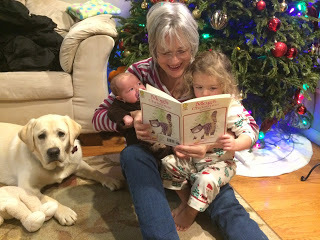
A lot of people will know Mog’s Christmas , by the wonderful Judith Kerr, from the new edition last year. It was first published in 1976, but this is the 1978 Picture Lions edition I read to my (then) small sons. We especially enjoyed it because my mum and dad’s cat never knew quite what to make of a Christmas tree. Now I’m the Grandma, It gives me enormous pleasure to read the same copy to my granddaughters - and granddog!
Jonathan Emmett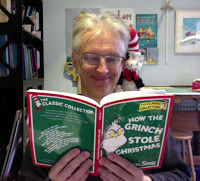
My family and I are big Dr. Seuss fans and Seuss’s How the Grinch Stole Christmas is a longstanding festive favourite in the Emmett household. I think that many, if not most, of the readers to this blog will already be familiar with it. Just in case you aren’t – it tells the story of a magnificently misanthropic creature who hates Christmas so much that he steals every last trace of it (gifts, decorations, food) in a brilliantly orchestrated Christmas Eve raid on his local town. You’ll have to read the book yourselves if you want to know if it has a happy ending.
Like all of Seuss’s books, the story is told in a funny, beautifully-crafted rhyme that reads perfectly aloud. However Seuss does cheat a little with the following couplet:
Michelle Robinson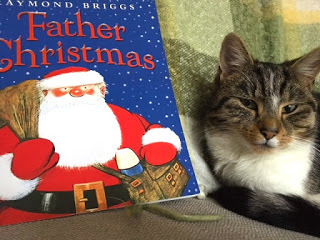 Muesli rejects your glad tidings.Muesli the cat couldn't be less bothered about
Father Christmas
by Raymond Briggs. She is totally unimpressed by all the illustrated details of his house at the North Pole. She isn't remotely curious about what he gives the Queen, or what he's wrapped up for his own pet cat at the end. If she could quote Raymond Briggs' Santa, she'd say,"Merry bloomin' Christmas." As it is, she can't even bring herself to meow.
Muesli rejects your glad tidings.Muesli the cat couldn't be less bothered about
Father Christmas
by Raymond Briggs. She is totally unimpressed by all the illustrated details of his house at the North Pole. She isn't remotely curious about what he gives the Queen, or what he's wrapped up for his own pet cat at the end. If she could quote Raymond Briggs' Santa, she'd say,"Merry bloomin' Christmas." As it is, she can't even bring herself to meow.
Abie Longstaff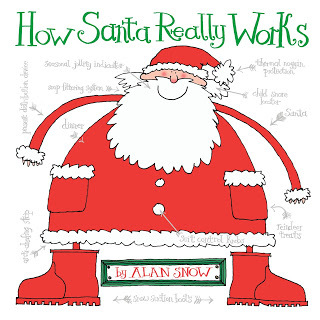
We love How Santa Really Work s by the appropriately named Alan Snow. It's a lot of fun and includes answers to pressing questions such as 'how does Santa fit down the chimney?' and others. It also has a wonderful cross-section of Santa's sleigh (who doesn't love a cross-section?). The book is a messy, detailed, mechanical joy.
Pippa Goodhart
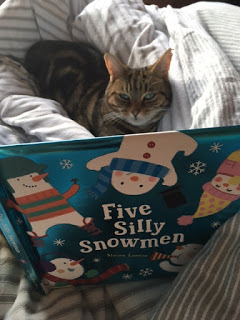 Five Silly Snowmen
by Steve Lenton,
Five Silly Snowmen
by Steve Lenton,
published by Little Tiger Press Five Silly Snowmen is a Christmas book that I only discovered last year, long after my grown-up children gave an excuse for me to enjoy such things. This time I was buying a book to read, along with a whole lot more, to my local Home-Start group's party for pre-school children. I shared a range of books, but this was the one that got asked for again and again. Bright and simple and silly, this is a counting rhyme -
One silly snowman is splashing in the sea. Two speedy snowmen are racing round a tree,' etc. And it ends with them all five snowmen tucked up in bed.
I shall be reading stories at this year's Christmas party, and this book is top of the pile for it! Happy Christmas! PS The cat is called Dotsy.
Chitra Soundar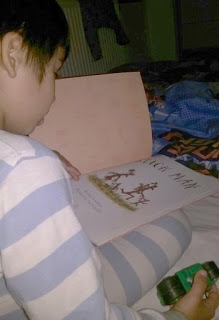 Stick Man
by Julia Donaldson and Axel Scheffler
Stick Man
by Julia Donaldson and Axel Scheffler
published by Scholastic Books Stick Man has stood the test of time in my nephew’s Christmas routine. Other Christmas books have come and gone. But Stick Man is a staple. The rhymes, the rhythm, the muddles and the troubles – the situations are tense as much as they are funny.
However the biggest joy of the story is when Santa is introduced as Stuck Man. Like all good picture books and those especially by Julia Donaldson, the story has layers that you can experience each time you read. And you will read it many, many times.
If you come to our house for a Christmas party, the entertainment includes a demonstration of how Stick Man helped Stuck Man get out of the fireplace.
Paeony Lewis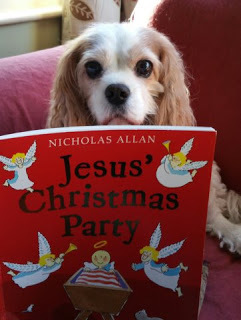 Spud doesn't think the Three Wise Men in this story are very wise.
Spud doesn't think the Three Wise Men in this story are very wise.
Don't they know bones make the best gift?When the children were young we had huge fun sharing Jes us' Christmas Par ty by Nicholas Allan (published by Random House). Now my children are adults so I'm left with Spud the dog and he's unimpressed by the lack of bones in the story. Never mind, I appreciate the cheeky humour of a tired innkeeper growing more and more frustrated at the goings on in his stable - all the innkeeper wants is a good night's sleep! The story is a mischievous, animated delight to read aloud and it ends charmingly, proving that even a two-thousand-year-old nativity story can be retold in a fresh, new way.
Natascha Biebow
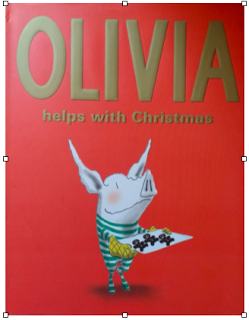
Our personal favourite is Olivia Helps with Christmas by Ian Flaconer. It is such a laugh! The author artfully captures all the joys of waiting for Santa, family traditions and spices it up with humour for children and grown-ups. We never tire of reading it over and over again. Is Santa here yet?!
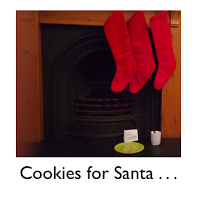
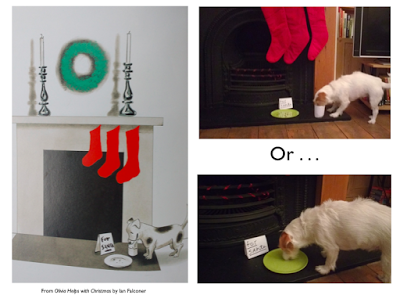
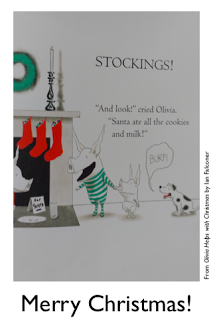
Do let us know your old or new picture-book favourites for this festive time of year.
Our next blog post will be Monday 2 January, 2017 - a new year filled with new books!
It's hard to choose just one book each, but these are our favourite picture books for this time of year. We hope you'll love them too, and add your favourite to our list in the comments.
Jane Clarke

A lot of people will know Mog’s Christmas , by the wonderful Judith Kerr, from the new edition last year. It was first published in 1976, but this is the 1978 Picture Lions edition I read to my (then) small sons. We especially enjoyed it because my mum and dad’s cat never knew quite what to make of a Christmas tree. Now I’m the Grandma, It gives me enormous pleasure to read the same copy to my granddaughters - and granddog!
Jonathan Emmett

My family and I are big Dr. Seuss fans and Seuss’s How the Grinch Stole Christmas is a longstanding festive favourite in the Emmett household. I think that many, if not most, of the readers to this blog will already be familiar with it. Just in case you aren’t – it tells the story of a magnificently misanthropic creature who hates Christmas so much that he steals every last trace of it (gifts, decorations, food) in a brilliantly orchestrated Christmas Eve raid on his local town. You’ll have to read the book yourselves if you want to know if it has a happy ending.
Like all of Seuss’s books, the story is told in a funny, beautifully-crafted rhyme that reads perfectly aloud. However Seuss does cheat a little with the following couplet:
“And he stuffed them in bags. Then the Grinch, very nimbly,But you’d have to be a Grinch yourself not to smile at this!
Stuffed all the bags, one by one, up the chimbley!”
Michelle Robinson
 Muesli rejects your glad tidings.Muesli the cat couldn't be less bothered about
Father Christmas
by Raymond Briggs. She is totally unimpressed by all the illustrated details of his house at the North Pole. She isn't remotely curious about what he gives the Queen, or what he's wrapped up for his own pet cat at the end. If she could quote Raymond Briggs' Santa, she'd say,"Merry bloomin' Christmas." As it is, she can't even bring herself to meow.
Muesli rejects your glad tidings.Muesli the cat couldn't be less bothered about
Father Christmas
by Raymond Briggs. She is totally unimpressed by all the illustrated details of his house at the North Pole. She isn't remotely curious about what he gives the Queen, or what he's wrapped up for his own pet cat at the end. If she could quote Raymond Briggs' Santa, she'd say,"Merry bloomin' Christmas." As it is, she can't even bring herself to meow. Abie Longstaff

We love How Santa Really Work s by the appropriately named Alan Snow. It's a lot of fun and includes answers to pressing questions such as 'how does Santa fit down the chimney?' and others. It also has a wonderful cross-section of Santa's sleigh (who doesn't love a cross-section?). The book is a messy, detailed, mechanical joy.
Pippa Goodhart
 Five Silly Snowmen
by Steve Lenton,
Five Silly Snowmen
by Steve Lenton, published by Little Tiger Press Five Silly Snowmen is a Christmas book that I only discovered last year, long after my grown-up children gave an excuse for me to enjoy such things. This time I was buying a book to read, along with a whole lot more, to my local Home-Start group's party for pre-school children. I shared a range of books, but this was the one that got asked for again and again. Bright and simple and silly, this is a counting rhyme -
One silly snowman is splashing in the sea. Two speedy snowmen are racing round a tree,' etc. And it ends with them all five snowmen tucked up in bed.
I shall be reading stories at this year's Christmas party, and this book is top of the pile for it! Happy Christmas! PS The cat is called Dotsy.
Chitra Soundar
 Stick Man
by Julia Donaldson and Axel Scheffler
Stick Man
by Julia Donaldson and Axel Schefflerpublished by Scholastic Books Stick Man has stood the test of time in my nephew’s Christmas routine. Other Christmas books have come and gone. But Stick Man is a staple. The rhymes, the rhythm, the muddles and the troubles – the situations are tense as much as they are funny.
However the biggest joy of the story is when Santa is introduced as Stuck Man. Like all good picture books and those especially by Julia Donaldson, the story has layers that you can experience each time you read. And you will read it many, many times.
If you come to our house for a Christmas party, the entertainment includes a demonstration of how Stick Man helped Stuck Man get out of the fireplace.
Paeony Lewis
 Spud doesn't think the Three Wise Men in this story are very wise.
Spud doesn't think the Three Wise Men in this story are very wise. Don't they know bones make the best gift?When the children were young we had huge fun sharing Jes us' Christmas Par ty by Nicholas Allan (published by Random House). Now my children are adults so I'm left with Spud the dog and he's unimpressed by the lack of bones in the story. Never mind, I appreciate the cheeky humour of a tired innkeeper growing more and more frustrated at the goings on in his stable - all the innkeeper wants is a good night's sleep! The story is a mischievous, animated delight to read aloud and it ends charmingly, proving that even a two-thousand-year-old nativity story can be retold in a fresh, new way.
Natascha Biebow

Our personal favourite is Olivia Helps with Christmas by Ian Flaconer. It is such a laugh! The author artfully captures all the joys of waiting for Santa, family traditions and spices it up with humour for children and grown-ups. We never tire of reading it over and over again. Is Santa here yet?!



Do let us know your old or new picture-book favourites for this festive time of year.
Our next blog post will be Monday 2 January, 2017 - a new year filled with new books!
Published on December 18, 2016 23:00
December 12, 2016
An alternative way to fund picture books that tackle tricky subjects –and finding a new way of working at the same time. With thanks to the Arts Council England, by Juliet Clare Bell

Have you ever wanted to write a picture book (or any other book) about a subject that you believe there’s a genuine need for but that you also know would be really difficult to sell to a traditional publisher?
And what if the book would take time and resources to research in order to make it as authentic as possible?
I am currently working on a project for which I received funding from The Arts Council, England. The project involves writing a picture book about a subject that would have been very difficult to sell to a traditional publisher –namely, child bereavement.
I am not going down the route of every book I write using alternative routes to publication. I am still using the traditional method for the majority of the time. But I've had a big rethink about what I really want to be doing over the past couple of years. Previously, if there was a certain topic that I was really interested in writing about but I knew the resulting manuscript was highly unlikely to be picked up by a traditional publisher, then I decided against writing it. And then I decided that that wasn't going to work for me any more. I decided that I'd look for different ways to make those books happen. And that different way -in this instance, funding from the Arts Council- has worked. And it's something I definitely plan to do again. From now on, if what I most want to write about is going to be a really difficult sell and is going to take research to do it, then I’m going to look for funding to create that book.
In this post, I'm going to talk about hints for getting an Arts Council grant for writing/creating a book, but it's worth thinking about other charities that might support you instead (or as well as). And having been commissioned to write one picture book by Bournville Village Trust
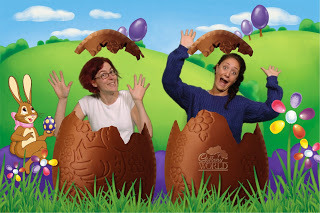
It was fun... (with Jess Mikhail, who illustrated the book)
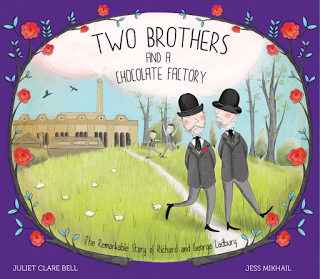
(and here's the front cover, by Jess)
and another for Birmingham Children's Hospital in the past couple of years,
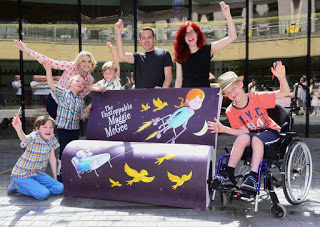 Dave Gray (the illustrator) and me, with some of the children involved in the project -(L-R) Calum, Aaron, Charlie and Dan, and Jess Wilkes-Reading who coordinated the project. With Dave's amazing book bench
Dave Gray (the illustrator) and me, with some of the children involved in the project -(L-R) Calum, Aaron, Charlie and Dan, and Jess Wilkes-Reading who coordinated the project. With Dave's amazing book benchI'd also suggest thinking really creatively about who might fund the book you're itching to create. The questions I've outlined below are with Arts Council funding in mind but a lot of them would apply to any potential funder...
So, if you’re interested in the possibility of applying for funding from the Arts Council for writing a difficult to sell book, but you're about as sure of what to do as when you are confronted with your first ever candyfloss...
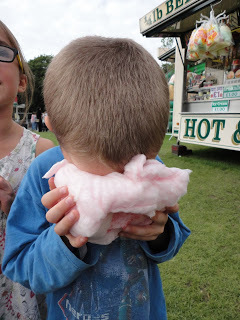
(Genuinely first ever exposure to candyfloss...)
here are some questions that might be good to think about carefully…
[1] Do you have a great idea for a fictional book (the Arts Council is not as interested in nonfiction, I believe) that’s going to require research? Are you keen to get funded so you can afford to start the project in the first place and so you can do the subject justice? Can you say why it’s such a great idea?[2] Is there a genuine gap in the market for the book you want to write? Can you really state your case for the need for this book?[3] Is your great idea one that tackles a subject that would be really hard to get a traditional publisher interested in (or, given what it will take to do the research, will it be hard to get a publisher to commission you to write the book so that you can afford to write it)?[4] Are you the right person to write it/illustrate it? Can you outline why you’re the right person to write/illustrate it?[5] Can you come up with relevant creative work with individuals who might typically have less access to the arts that will add to the project and help you with coming up with the most authentic book you can write?[6] Can you find organisations/charities/individuals that would agree with your answers above and want to champion the book, either during the research/writing process, or once it’s released? [7] Can you articulate how this grant would help you as an artist in terms of your future as a writer or writer/illustrator? [8] Can you articulate how this grant would help you as an artist in terms of your future as a writer or writer/illustrator?[9] Can you come up with ways to promote your book so that it will have the widest (and most relevant) audience reasonably possible?
If your answer to all the above questions is yes, then you might be in a strong position to get Arts Council funding for your project –if you write your application well, and ask for the appropriate amount of money (grants fall into two categories –up to £15,000, and over; my guess is that for most projects including writing a picture book, you’d probably want to apply for the up to £15,000 grant as I did. And with these grants, you find out within six weeks if you’re successful, which is extremely helpful).
In case it is of use to people thinking about applying, I’ll answer the questions above, below, for our project which was successful.
[1] Do you have a great idea for a fictional book… and you are keen to get funded so you can afford to start the project in the first place and so you can do the subject justice? Can you say why it’s such a great idea?

Acorns Children's Hospice -who first asked about the possibility of writing the book
I wanted to write a picture book about the death of a child (because I'd been approached about it by a charity who didn't have the funding for it and once I'd started thinking about it, the idea wouldn't go away). It would require spending time with bereaved families and young people with life-limiting conditions in order to make it as authentic as possible. I couldn’t afford to do the project (which would spend months of liaising with different charities and meeting families) if I wasn’t going to get funded, or if there was no guarantee that the book would go ahead.
[2] Is there a genuine gap in the market for the book you want to write? Can you really state your case for the need for this book?
I’d already written a manuscript about the death of a grandmother after the death of my own mother. It’s not a story about my mother (whose life and death was very different from the grandmother in the book) but the emotional truth of love and death in the story came straight from my own experience and my relationship with my mother. And although it’s one of my agent’s favourite things I’ve written and still remains my own, it’s been a very hard sell because it’s about death, and because it is sad (though hopeful).
In late 2015, I was contacted by someone from a children’s hospice who’d seen an early copy of The Unstoppable Maggie McGee (illustrated by Dave Gray, which I’d been commissioned to write for Birmingham Children’s Hospital).
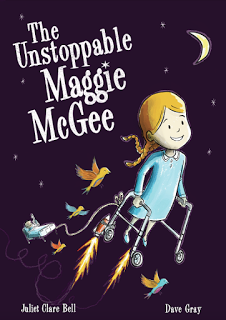
She asked if I’d consider writing a picture book about sibling bereavement. From the research I’d done for Maggie McGee, I already knew that there were very few picture books about death in children (far fewer than the relatively small number there are about death in adults) and it was clear that it would be an extremely hard book to sell to a traditional publisher. Also, and I think this is really important, in order to write a picture book about such a sensitive subject as child bereavement, I’d need to take my time and do some proper research. So I’d need to find funding.
And to make sure there was a genuine need for such a book, in addition to looking for other picture books about death, I spoke with a child bereavement counsellor from Edward's Trust (the local bereavement charity),

a palliative care consultant, someone from a children’s hospice and some librarians. They all confirmed that they felt there was a genuine need. (And I used some of their quotes about that need in the accompanying document that goes with the application.)
If you have a book in mind, do some basic research to make sure there really is a gap in the market and then think about the most relevant people in that area that you could ask in terms of whether there would be a genuine need for the book.
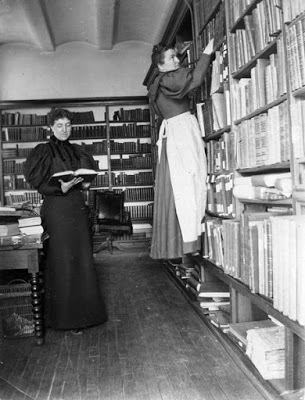
An awesome picture of librarians from 1896. Librarians these days come in full techni-colour and generally know everything and are generous enough to share their knowledge. Hooray for librarians....
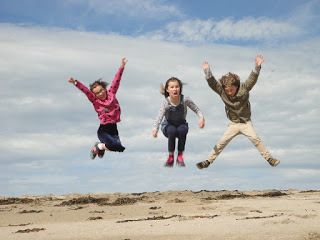
Hooray for librarians!
Librarians are brilliant for this, as are experts in the area, and most people are pretty nice about being contacted I have found...
[3] Is your great idea one that tackles a subject that would be really hard to get a traditional publisher interested in (or, given what it will take to do the research, will it be hard to get a publisher to commission you to write the book so that you can afford to write it)?
Yes, see above.
[4] Are you the right person to write it/illustrate it? Can you outline why you’re the right person to write/illustrate it?
In 2015, I was very lucky to be commissioned to write a picture book set in a children’s hospital (partly to raise money for Birmingham Children’s Hospital). The characters Dave Gray (the illustrator) and I created have major disabilities and some are extremely sick. In order to make the book as authentic as possible, I did creative sessions in the hospital school with inpatients and siblings of very sick children. I also spent time on the wards with children with chronic conditions, and then with children with long term disabilities or chronic conditions who use the hospital frequently.
I’ve also worked with other vulnerable people creating books, including teenagers from a pupil referral unit. Dave and I worked together on the hospital book and the structure for the project I was going to apply for funding for would be partly based on what worked really well from the hospital project, and Dave had also done creative work with vulnerable groups of young people. We could show that we had worked well as a team before –as we’d created a book that had sold over 8000 copies within nine months. And we had an excellent relationship with the printer (who was also the printer on another book I’d been commissioned to write, previously). I have also done lots of author visits and could put a series of launch/post launch events into the application.
Think carefully about what makes you the best person to write the book. If it's something that really interests you then there's probably a reason for that. Make sure you look like the best possibly contender to do the project you're applying for. Think about everything about you and what you've done previously -were you a teacher? Did you do research on X when you were younger? Do you have family who have been impacted by something you want to write about?
[5] Can you come up with relevant creative work with individuals who might typically have less access to the arts that will add to the project and help you with coming up with the most authentic book you can write?
Working with the children or families that are most relevant to the book you want to write works really well in two ways –it helps you create the most authentic story/book that you can create, and it also means that children/young people who may have less access to the arts get to do some really interesting projects they might otherwise not get to do.
I’ve made lots of books with children in schools (after I’ve done author visits at the schools, usually) and with my own students where I teach for Writing West Midlands. I use lulu, the self-publishing print on demand company and it means that we can make the books and then the students can buy as many or as few copies as they like and they’re really cheap to buy. They’re usually collections of writing done by the children with some black and white pictures added, though with my own students, it’s more often their own short novels that they’ve written. And when I was doing the hospital project, one of the children asked that we create a picture book together. Because the quickly created picture book worked really well (even though I’d not planned on doing it at all in that project) and the children involved loved doing it, I wanted to do it again for the project I was applying for.
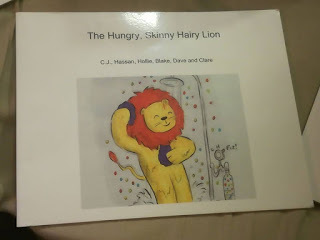
Our first picture book made with the children at Birmingham Children's Hospital
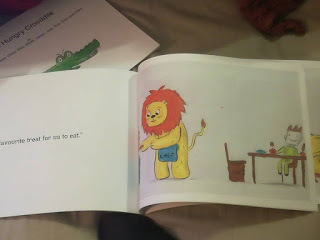
Pictures from inside the book, The Hungry Skinny Hairy Lion
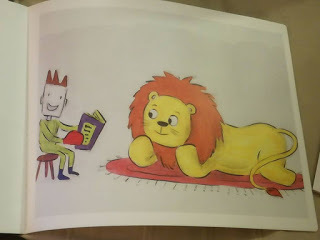
More pictures from inside the book
So I said that Dave (the illustrator) and I would help the children and young people to come up with stories and characters and then we’d turn them into simply put together picture books for the children/young people involved. And then later on in the project (during the months whilst Dave would be illustrating our picture book), I would also put together compilations of stories and other writings from the families involved in the project (again, using lulu).
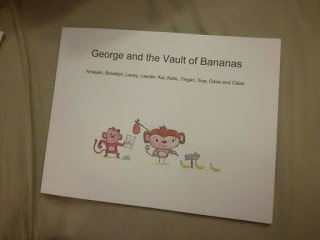
Here's one we made with the older children from Edward's Trust, in October 2016: George and the Vault of Bananas
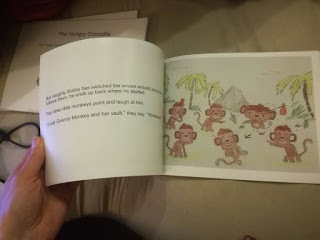
And here's a spread from the book
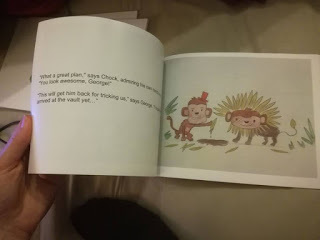
And another...
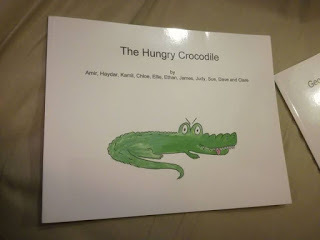
And here's The Hungry Crocodile which we made with the younger children...
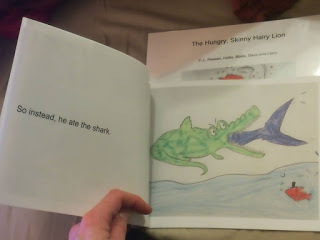
and one of the more gruesome pictures from inside (but not the most gruesome)... But fear not, the naughty crocodile ends up spitting out the shark and becoming a vegetarian (thanks to Superhero Guinea Pig)...
If you’re thinking about doing a project anything like this and don’t know how to put books together, they’re pretty straightforward. I wrote a blog post on how to do it, which you can read here, and for the picture books, it’s even simpler as I’ve just used the photo album template and uploaded our illustrations as if they’re photos. If I can do it, then pretty much anyone can as I’m not massively technical –if you can use cut and paste and word, and you know how to upload pictures then you should be fine.
[6] Can you find organisations/charities/individuals that would agree with your answers above and want to champion the book, either during the research/writing process, or once it’s released?
I spoke with a bereavement counsellor at Edward’s Trust, a local child bereavement charity about the potential project and they were really enthusiastic. I also remained in touch with the person from Acorns, the children’s hospice who’d brought up the idea originally. And then someone else connected us up with Child Bereavement UK. All the charities were really interested in the project as they believed that there was a real need for the book. Whilst only one of them could put up some money towards the project, they all said they’d support it in various ways which were extremely helpful –putting on events, inviting families to participate, helping arrange meetings with individuals, families and groups, hosting the meetings, etc. And, critically, they all wanted to support the book once it came out. In addition, I met with other health professionals and people doing research into palliative care who agreed to support me (and meet with me) and to support the application. And I got librarians to support the application, too.
There is a supporting document (that can be about five pages long) which you attach to your application and it can be anything you want it to be. I got quotes from librarians (about the need for such a book and about previous library events I’d done and saying that they’d like me to do launch events for this one) and bereavement professionals (talking about the need for the book and how they’d support it).
The Arts Council wants to fund projects that will reach a large audience –and which will actually happen. You need to convince them that you’re a good bet to make the project work, and that you can reach an audience who will really benefit from your work. Use all your contacts so that you can make the project reach as many (relevant) people as possible –which might include blogging on other writers’ sites, visiting people’s schools, libraries, etc.
[7] Can you articulate how this grant would help you as an artist in terms of your future as a writer or writer/illustrator?
After writing a book on a sensitive issue for the local children’s hospital and working with vulnerable people in and out of hospital, I was able to say that by doing another book tackling a sensitive issue and working with vulnerable people, Dave and I were creating a niche for ourselves as an author-illustrator team who were comfortable and keen to work in areas that some people would choose not to work in and create books that children who may feel they’re not reflected in books can really relate to. We have two other projects that we’re really keen to apply for funding after this one where there is a clear gap in the market but where traditional publishers are less likely to back financially.
The Arts Council doesn’t want you to do a single project and then never work in the arts again. It wants to fund projects that will really help with your artistic career, so you need to show how gaining the grant and doing the project will help you.
[8] Can you frame the project in terms of art, even if the outcomes may well also be social ones? (The Arts Council is an arts organisation so you can’t just say ‘this project will improve mental health in this group of people’. It needs to address an artistic purpose, for example, providing a certain group of people with less access to the arts with relevant literature/art that they can engage in. Although the project may well have social benefits, the funding will be given where they see a genuine artistic purpose being met.)
If the book you want to write will be good art (as you would hope any book would be!) and can show that lots of people will get to read it, then you can frame that in terms of art. If you can show that the group of people who will benefit from it are people who may have less access to appropriate art, all the better. If you can also do some creative work with the people for whom your book is aimed (like a project making joint books with them where they get to create something that they can keep and you get to know them and are consequently better able to write your own authentic book as a result), then that is great, too. By spending time with young people who were bereaved or soon to be bereaved, or with young people with life limiting conditions, Dave and I are in a much stronger position to write and illustrate the most authentic book we can about child bereavement.
[9] Can you come up with ways to promote your book so that it will have the widest (and most relevant) audience reasonably possible?
You are expected to put in a marketing budget for Arts Council projects, so work out from everyone you know what the best way to promote your book will be. I asked staff at bookshops where I’ve done events before if they’d be happy for me to do a launch there and they were. I arranged to do four or five different library events (and we discussed how we can target the advertising for the events so that the right people get access to the book). We will have a launch for each of the three charities involved in the project –and this is where charities are incredibly helpful because they will invite the people for whom the book will be most relevant. I’m going to do a blog tour of different blog sites –bereavement sites, teacher sites and writing sites to talk about the book and the subject. A lot of children’s writers, especially if you’re in organisations like the Society of Children’s Book Writers and Illustrators (SCBWI) or the Society of Authors, will know lots of other writers with a collective wealth of knowledge about how to do events, blog, get your book seen by the most relevant people. Ask people questions. I asked loads of people loads of questions before sending off my application.
The application did require a lot of preparation since it was my first Arts Council application (it would be massively quicker to do another one now I’ve done one). I had to be pretty specific about what I’d do and when, but that’s been incredibly helpful now I’m actually managing the project. And it’s taught me a new way of working which I’ve found extremely helpful. Since part of the funding for a project like this is for project managing it, I had to break down where I was being an artist and where I was being a project manager for the application...
...And I’ve found that it’s really affected how I work. Now, I am boss for about two hours a week where I work out what I need to get done the following week and write myself a weekly plan. And the rest of the week, I do as I am told (by boss me, on my plan), and I don’t have to make decisions. This might be really obvious to some writers/freelancers but it's taken me a long time to work out -an unexpected and happy consequence of writing the grant application
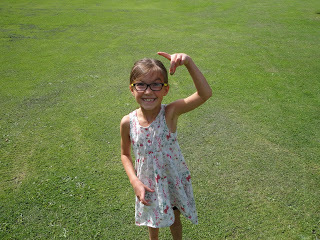
(my new way of working may be obvious to many, but to someone who struggles with organising her week, the realisation has been as joyful as finding an acorn when you weren't expecting one)
It frees up loads of thinking time for me to write in my head and to do what I really love to do –write books.
Have you ever applied for funding to write a book –either to the Arts Council or any other funding body? How have you found the process? Or do you have a book in mind that funding might be extremely useful for? It would be great to hear from you, below. And if you’re a writer in the States, are there equivalent bodies you can apply to?
Thank you.
www.julietclarebell.com
Published on December 12, 2016 06:30
December 4, 2016
Eyes-Only Advent Picture Book Quiz • Jonathan Emmett
December is here again! So, following on from last year's quiz I thought I'd test your picture book knowledge with another Advent-calendar-like picture book challenge.
When I first started out in children's books, I was illustrating as well as writing. One of the pieces of advice my first agent, Gina Pollinger, gave me at our very first meeting was to study the work of successful illustrators and – in particular – how they drew their characters' eyes. "It's important to get the eyes right," she told me, "if you don't, the character won't come alive and children will not believe in them." Although I never really made it as an illustrator, this is still an excellent piece of advice to any budding picture book illustrator.
So, for this year's quiz, how many of these classic picture book characters can you recognise from the eyes peeping out from the Christmas tree foliage below? Click on each image to reveal the answer. To make things a little more festive – there's a common theme to the even-numbered images.
1.

2.

3.

4.

5.

6.
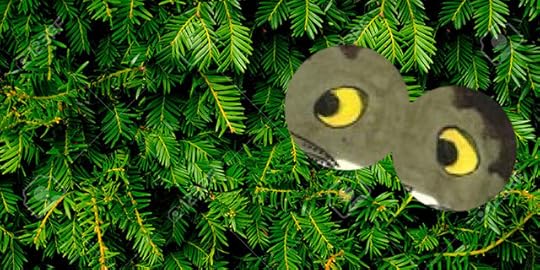
7.

8. (No – this one is not Homer Simpson's nipples!)

9.

10.

How did you do?
10/10Eagle-eyed: Brilliant! You have 20/20 picture book vision.7-9/10An attentive pupil: A good effort. You know your Blake from your Briggs.4-6/10Not bad looking: But perhaps you should add some new reading glasses to your Christmas list.1-3/10Blinking awful: Are you sure you had your own eyes open?
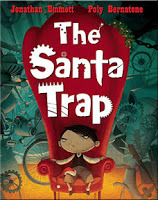 Follow the fiendishly funny exploits of evil-eyed über-brat Bradley Bartleby in Jonathan Emmett's Christmas picture book,
The Santa Trap
, illustrated by Poly Bernatene and published by Macmillan Children's Books.
Follow the fiendishly funny exploits of evil-eyed über-brat Bradley Bartleby in Jonathan Emmett's Christmas picture book,
The Santa Trap
, illustrated by Poly Bernatene and published by Macmillan Children's Books.
Find out more about Jonathan and his books at his Scribble Street web site or his blog. You can also follow Jonathan on Facebook and Twitter @scribblestreet.
See all of Jonathan's posts for Picture Book Den.
When I first started out in children's books, I was illustrating as well as writing. One of the pieces of advice my first agent, Gina Pollinger, gave me at our very first meeting was to study the work of successful illustrators and – in particular – how they drew their characters' eyes. "It's important to get the eyes right," she told me, "if you don't, the character won't come alive and children will not believe in them." Although I never really made it as an illustrator, this is still an excellent piece of advice to any budding picture book illustrator.
So, for this year's quiz, how many of these classic picture book characters can you recognise from the eyes peeping out from the Christmas tree foliage below? Click on each image to reveal the answer. To make things a little more festive – there's a common theme to the even-numbered images.
1.

2.

3.

4.

5.

6.

7.

8. (No – this one is not Homer Simpson's nipples!)

9.

10.

How did you do?
10/10Eagle-eyed: Brilliant! You have 20/20 picture book vision.7-9/10An attentive pupil: A good effort. You know your Blake from your Briggs.4-6/10Not bad looking: But perhaps you should add some new reading glasses to your Christmas list.1-3/10Blinking awful: Are you sure you had your own eyes open?
 Follow the fiendishly funny exploits of evil-eyed über-brat Bradley Bartleby in Jonathan Emmett's Christmas picture book,
The Santa Trap
, illustrated by Poly Bernatene and published by Macmillan Children's Books.
Follow the fiendishly funny exploits of evil-eyed über-brat Bradley Bartleby in Jonathan Emmett's Christmas picture book,
The Santa Trap
, illustrated by Poly Bernatene and published by Macmillan Children's Books.Find out more about Jonathan and his books at his Scribble Street web site or his blog. You can also follow Jonathan on Facebook and Twitter @scribblestreet.
See all of Jonathan's posts for Picture Book Den.
Published on December 04, 2016 23:49
November 27, 2016
Author Technology by Abie Longstaff
How do you use technology for writing?
Lots of my author buddies use Scrivener - writing software that allows you to organise notes and research alongside your manuscript. Many of my friends extol its virtues but, because my books are shorter than theirs, I've never felt the need to use it.
In fact, at first I thought I didn't use technology at all for writing:
I scribe longhand in notebooks, recording every idea in case one comes in useful later.
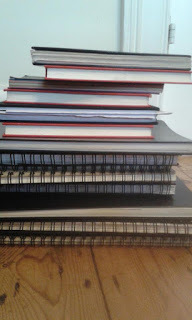
I scribble out my plots by hand
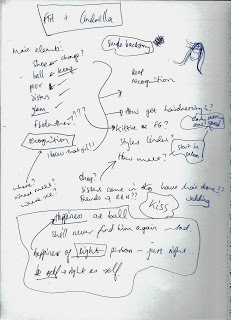
I research at the library or by reading through my own groaning shelves of picture books

Yep I thought, except for the final write up in Word, I can get by without technology at all.
I tapped through my phone feeling quite zen and satisfyingly Luddite. Only - up popped Twitter and Facebook and Blogs and my stash of Bookmarks and I realised that yes I do use technology for picture book writing - I use the internet. And I use it at every stage of the process.
1. For inspiration
I flick through the Comedy Wildlife Awards for photos of foolish animals
I use Google Images - eg I might simply type in 'penguin' to see if anything visual sparks an idea.
I have Pinterest boards to store ideas for my books - my Fairytale Hairdresser one is here and looks like this:

2. For research:
If I want fairy tales I use Sur la lune, which has a wonderful forum as well as research notes on each tale.
For myths I often visit Seven Miles of Steel Thistles.
Then, of course, there's the high-level scientific research we authors routinely have to do:

3. For writing advice:
I look on forums and sites like
SCBWI
Notes from the Slushpile
Author Allsorts
Girls Heart Books
4. For promotion
I use my Twitter and I follow the Picture Book Den Twitter
I use my Facebook
my website
and I blog here on Picture Book Den as well as other sites as a guest.
I follow a whole range of wonderful blog and book review sites such as
Serendipity Reviews
Story Snug
Nayu's Reading Corner
Heather Reviews
Tales of Yesterday
Luna's Little Library
So I guess I'm not as much of a Luddite as I thought!
What about you - what technology do you use for writing?
Abie Longstaff's latest picture book is The Fairytale Hairdresser and the Princess and the Pea.
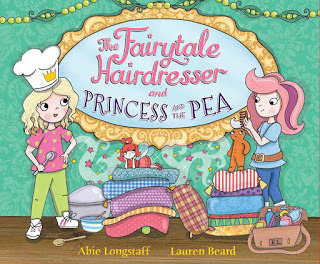
Lots of my author buddies use Scrivener - writing software that allows you to organise notes and research alongside your manuscript. Many of my friends extol its virtues but, because my books are shorter than theirs, I've never felt the need to use it.
In fact, at first I thought I didn't use technology at all for writing:
I scribe longhand in notebooks, recording every idea in case one comes in useful later.

I scribble out my plots by hand

I research at the library or by reading through my own groaning shelves of picture books

Yep I thought, except for the final write up in Word, I can get by without technology at all.
I tapped through my phone feeling quite zen and satisfyingly Luddite. Only - up popped Twitter and Facebook and Blogs and my stash of Bookmarks and I realised that yes I do use technology for picture book writing - I use the internet. And I use it at every stage of the process.
1. For inspiration
I flick through the Comedy Wildlife Awards for photos of foolish animals
I use Google Images - eg I might simply type in 'penguin' to see if anything visual sparks an idea.
I have Pinterest boards to store ideas for my books - my Fairytale Hairdresser one is here and looks like this:

2. For research:
If I want fairy tales I use Sur la lune, which has a wonderful forum as well as research notes on each tale.
For myths I often visit Seven Miles of Steel Thistles.
Then, of course, there's the high-level scientific research we authors routinely have to do:

3. For writing advice:
I look on forums and sites like
SCBWI
Notes from the Slushpile
Author Allsorts
Girls Heart Books
4. For promotion
I use my Twitter and I follow the Picture Book Den Twitter
I use my Facebook
my website
and I blog here on Picture Book Den as well as other sites as a guest.
I follow a whole range of wonderful blog and book review sites such as
Serendipity Reviews
Story Snug
Nayu's Reading Corner
Heather Reviews
Tales of Yesterday
Luna's Little Library
So I guess I'm not as much of a Luddite as I thought!
What about you - what technology do you use for writing?
Abie Longstaff's latest picture book is The Fairytale Hairdresser and the Princess and the Pea.

Published on November 27, 2016 23:30
November 20, 2016
Learning to Wait – Childhood Training for Being a Children's Book Author
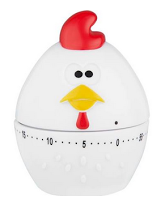 Tick-tock,
Tick-tock,
tick-tock.
Waiting.
Waiting . . .
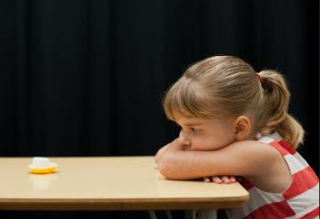
Waiting for storytime
Waiting for Mum to play
Waiting for school to end
Waiting for dinner
Waiting your turn . . .
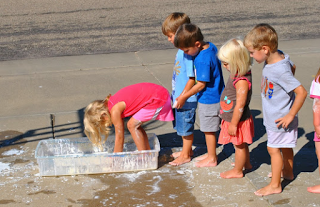
Waiting for the rain to stop
Waiting for the cake to bake
Waiting for Uncle to arrive
Waiting for the post
Waiting for snow
Waiting for birthdays
Waiting for the phone to ring
Waiting for a kiss
Waiting for Santa!
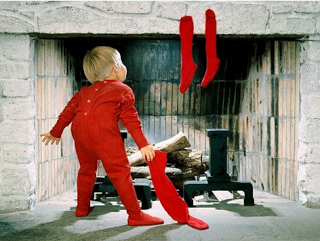
As a child, there are ENDLESS things to wait for. Waiting does not come easy. Whydo we have to wait? Why can’t we have it NOW? Is is sooooo ***** frustrating!
As we get bigger, we learn to do just that . . . wait.
But IT ISN'T EASY!!!!
As a child, I learned how to wait for letters (and even as a grown-up, there are still some of these sometimes) and
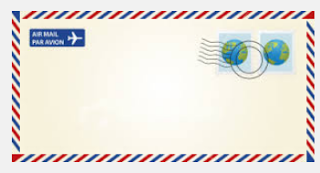
if I wanted to know something, I had to wait to go to the library, or look it up in the Encyclopedia Britannica at the neighbour’s house.
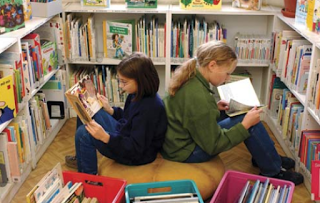
As a grown-up, the world is a much faster-moving place. But, even so, it seems the clock of time has speeded up infinitesimally.
 When I send an email, I itch waiting for a quick reply. Plus, I don’t have to wait very long at all to find out something now. I can ask Google. I can see whether it will rain tomorrow.
When I send an email, I itch waiting for a quick reply. Plus, I don’t have to wait very long at all to find out something now. I can ask Google. I can see whether it will rain tomorrow.  I can see how fireworks make all those cool shapes and colours. And when I ping a message on social media, I can
I can see how fireworks make all those cool shapes and colours. And when I ping a message on social media, I canbe pretty certain someone will ping-back fairly instantaneously . . .
But still there is waiting.
But, wait! AHA!
 It seems that from the moment I started out, the universe has been preparing me for my raison d’etre – writing children’s books.
It seems that from the moment I started out, the universe has been preparing me for my raison d’etre – writing children’s books. The business of creating and publishing children’s books is full to the brim with WAITING!
Waiting for an idea
Waiting for the manuscript to be ‘cooked’
Waiting for your critique group’s feedback
Waiting for a reply to submissions
Waiting for an agent to say yes
Waiting for the publisher to say YES!
Waiting for the contract
Waiting for the editor’s feedback
Waiting to hear if your revision is OK
Waiting for the pictures to be added to the words
Waiting for the proofs
Waiting for co-editons
Waiting for the printing
Waiting for the books!
Waiting to see it in the shop
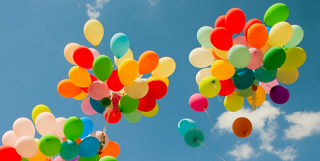 HOORAY!!
HOORAY!! Then . . .
Waiting for an idea . . .
Waiting to hear if there will be a new book.
Waiting –-
So, you see, being a child is the perfect training for being a children’s book writer. Even if it is **** frustrating.
__________________________________________________________________________
Natascha Biebow
Author, Editor and Mentor
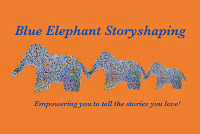 Blue Elephant Storyshaping is an editing, coaching and mentoring service aimed at empowering writers and illustrators to fine-tune their work pre-submission. Check out my small-group coaching Cook Up a Picture Book courses!
Blue Elephant Storyshaping is an editing, coaching and mentoring service aimed at empowering writers and illustrators to fine-tune their work pre-submission. Check out my small-group coaching Cook Up a Picture Book courses!Natascha is also the author of Elephants Never Forget and Is This My Nose?, editor of numerous award-winning children’s books, and Regional Advisor (Chair) of SCBWI British Isles.
Published on November 20, 2016 19:30
November 14, 2016
Love Loud, Love Louder, Love the Loudest we’ve Loved (but not just within our cosy social media bubble who mostly share our views to start with). Where do picture books fit in, right now? by Juliet Clare Bell
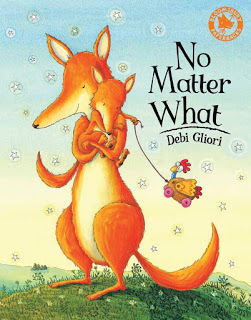
It’s been an extraordinary week and a lot of people are feeling very unsettled (an understatement, I know). There were many reasons why people voted the way they did, but regardless of the reasons, a win for a team which has expressed openly racist, sexist and homophobic views sends a frightening message to many millions of people.
Now this is a picture book blog site and it’s a joint site (please note, any views expressed here are my own) so I’m trying to make this about what we can do, practically, as writers and creators of children's books . And a lot of writers I know are feeling very low right now, and helpless, and not inclined to write. After all, lots of writers posted and shared posts calling out racism, sexism and homophobia –I was one of them– and all, seemingly, to no avail. I for one feel foolish –for a second time this year, I’ve let myself get too cosy in my own artificial bubble of social media contacts and probably felt better about myself for sharing things that were going to have absolutely no impact on anyone I shared them with except allowing other people like me to feel better about themselves, because we share a horror of such intolerance.
In fact, the last couple of years have been my best years of writing yet, because I’ve felt like I’m writing more honestly. I feel more engaged with my emotions, I’m more prepared to be vulnerable, and I like what I’m writing now much more than anything I’ve written before. Because it’s from the heart. And much of what I’ve written has been inspired what has been happening over the past few years. And yet...
I still got it wrong. Properly wrong. I've let myself be duped by social media, where it has clearly been in the best interests of the people who profit from social media to let us live in our imaginary harmonious world of other people who think the same as us. I have my own protected life to live (with my three children), and it can be too easy to let Facebook be a comfort blanket and have my views reflected back at me without being challenged. And whilst I'm almost certain I've never shared anything (nor said anything) that mocked the opposite side or its supporters, in my cosy social media world where it was easy to assume people all pretty much felt the same, I didn't call people up on it publicly when I saw stuff that felt a bit patronising or even superior in the way I would have done if someone had been saying anything offensive from the opposition. I was lazy. And I am sorry.
In school visits, I encourage children to make mistakes and get things wrong. I make a big thing about it, because I think that it's critical for encouraging creativity, and we can get so much from learning from our mistakes. The children describe how it feels when they make mistakes: they feel embarrassed, upset, sad, small, horrible, angry, frustrated...
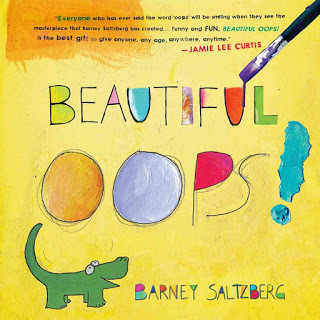
Barney Saltzberg's Beautiful Oops. Let's turn our mistakes into something positive and get to work...
Well, it's time to practise what we preach. I feel a lot of those emotions above. The circumstances that led to the possibility of people choosing someone whose behaviour and words encourage racism, sexism, homophobia and dismissal of people with disabilities, would remain the same even if the vote had gone a different way. We clearly need to be doing things a lot differently from how we're doing them. I am part of the system that’s gone so wrong and as well as feeling horror at what is happening, I am also licking my wounds, feeling embarrassed and ashamed and accepting my part in that, however small. And then, I am making sure my response to it is positive and active, rather than despondent and inward looking. This isn't just happening now. It's been working up to this for a long time. There is so much for us all to do and since whatever we did do didn't work, we need to make changes. And tiny changes from large numbers of us can have a big impact.
So what can we as writers and picture book creators, do right now, to play a more successful part in challenging intolerance, racism, sexism and homophobia? How can we encourage critical thinking in children (and remind us to use it better ourselves)? First of all, we can fight off the desire to go and hide under a duvet -and write (or take our pen and paper with us under the duvet and write from there). In the words of Toni Morrison:
“This is precisely the time when artists go to work. There is no time for despair, no place for self-pity, no need for silence, no room for fear. We speak, we write, we do language. That’s how civilizations heal.”
It is not self-pitying to be inward looking for a little bit and challenge ourselves as to how we can do things better; it is crucial. And in terms of healing, which books are healing? I asked people (from a highly biased group of people of my Facebook friends, the SCBWI British Isles Facebook site and the US-based picture book writing site, PiBoIdMo group) which picture book they’d recommend for children at the moment during these unsettling times, with a view to writing this post. I was overwhelmed by responses -and a particular thank you to people with differing political views who posted. In this current climate, it can't have been easy. Here are some of the recommendations, with some responses:
Each Kindness by Jacqueline Woodson and E.B.Lewis (which came up quite a few times by American writers). Also, by the same author, The Other Side. ‘I love it so much. Especially poignant now because the children voted differently in the election than the adults did. And in this book, the children act differently than the adults, too--and they are correct’
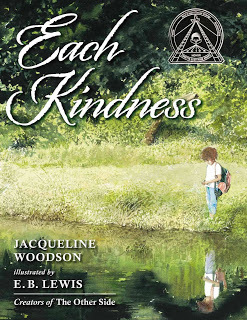
Tusk Tusk, by David McKee ‘But maybe that's too depressing...’; also his book The Conquerors, which came up a couple of times: 'about a general who invades countries for their own good (all except one little country...) and Two Monsters (arguing about whether the sun's rising or the dusk's descending)'
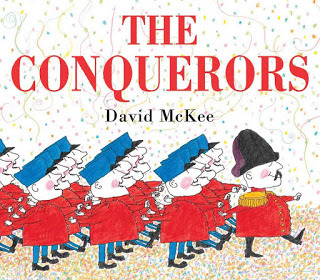
Dr Seuss came up for lots of people:The Lorax –which came up several times ‘Very pertinent’, as did Oh, The Places You'll Go!
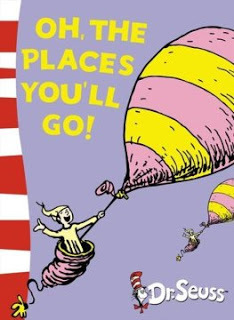
‘...Chokes me up every time I read it to the kids (3 & 6) as it pretty much sums up life to me!’; ‘How the Grinch Stole Christmas! is a perennial favourite in our house. Reading it is not restricted to Christmas because we love it and take it in turns to recite the bits we know by heart. So the sharing of it is joyful and fun but there's also the lovely idea of his heart growing 'three sizes that day' because of the community spirit’; ‘The Sneetches are good for thinking about differences between us and the fact that ultimately we're all the same… they included it when doing Black History month at school…’ ‘I love Dr. Seuss's books! … teach… lessons in subtle ways. And I love his quirky kind of illustrations!’ and ‘who wouldn't want to build a quick trick chick stack? (Fox in Sox)… (and there were more)
No Matter What by Debi Gliori –which came up several times and was the book I’d also been thinking about most this week: ‘such a wonderful and important message to give children’ (but it's ended up in so many of my posts that I'm putting a different book of hers this time -but you can watch Debi reading it if you press on the link, above). (Also, her Dragon loves Penguin: ‘still makes me cry. A great story of just because you're different doesn't mean you can't fit in’
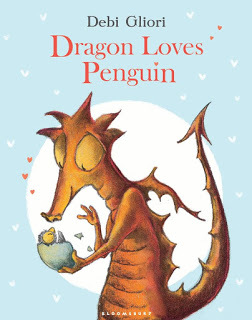
and ‘At home, when we're feeling sad, we go back to Mr Bear Says Can I Have a Hug? - which I can recite by heart, we read it so many times’)
‘I think wordless PBs would be so effective right now--
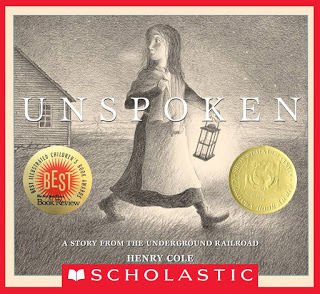
Henry Cole's Unspoken comes to mind; so does Sidewalk Flowers (by JonArno Lawson and Sydney Smith)’. Others recommended wordless books, too: Tuesday and Flotsam by David Wiesner

and the wordless The Arrival by Shaun Tan. 'Poignant, resonant and exquisitely illustrated. But to share with an older child obviously'. Suggested by several.
Lost and Found by Oliver Jeffers. ‘Classic story and the boy learns to love 'the other'’; also his Hueys books, and The Way Back Home ‘beautiful in terms of friendship and …co-operat[ion]… even when the same language and culture is not shared’; and The Day The Crayons Quit
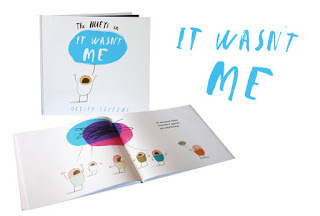
And then there are many other fantastic books recommended, some I know already and plenty, especially recommendations I was given from people on the US PiBoIdMo site, that I've never heard of. And where I've found them, I've put links to a YouTube reading of them.
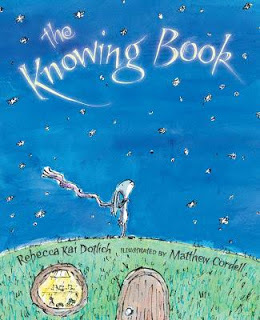
The Knowing Book by Rebecca Kai Dotlich… ‘a beautiful and comforting book’
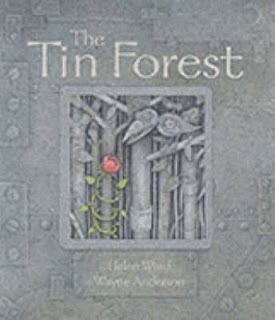
The Tin Forest by Helen Ward. 'It's such a beautiful idea because this man wants so much to be in a real forest instead of a wasteland so he makes one out of tin, and soon one actually grows... and the illustrations really show how the two become one. It's a wonderful story about hope and the power of belief (but not the kind where you just want stuff - where you do stuff to make it happen!)'
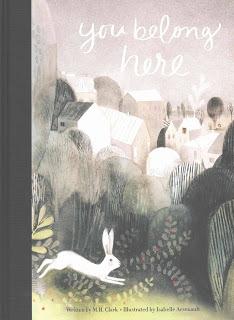
You Belong Here by M.H. Clark. '[A teacher I know]… plans to use it in her legacy unit with 5th graders. She has a very diverse class and I love that she creates an amazing community'.
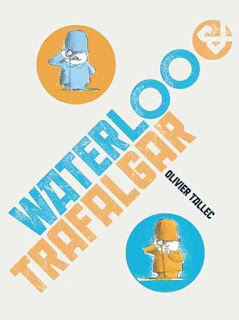
Waterloo and Trafalgar by Olivier Tallec
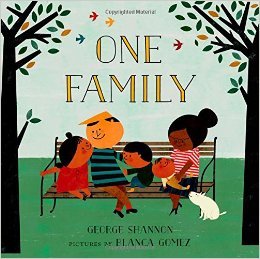
One Family by George Shannon and Blanca Gomez

Peace Is An Offering by Annette LeBox and Stephanie Graegin
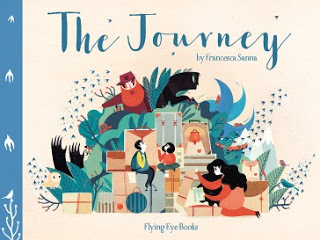
The Journey by Francesca Sanna (which came up a couple of times)
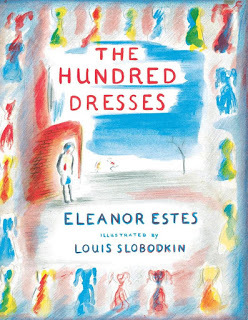
The Hundred Dresses by Eleanor Estes and Louis Slobodkin
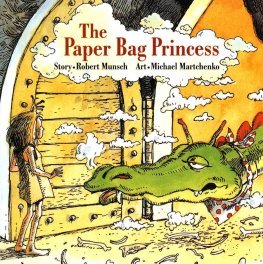
Paper Bag Princess by Robert Munsch and Michael Martchenko

Smoky Night by Eve Bunting and David Diaz (a picture book about rioting)
Rosie Revere, Engineer by Andrea Beaty & David Roberts ‘Rosie is a brilliant inventor of fabulous gizmos and gadgets. A couple of lines in the book that I love......."Your brilliant first flop was a raging success!" & 'Life might have its failures, but this was not it. The only true failure can come if you quit' A fabulous inspiring & heartwarming tale about failure, perseverance & self belief!’
Grace for President by Kelly DiPucchio
How to Heal a Broken Wing by Bob Graham
Be Good to Eddie Lee by Virginia Fleming and Floyd Cooper
Vanilla and Chocolate by Maritza Martinez Mejia and Estella Mejia (recommended by the author) ‘a bilingual book about tolerance’.
Enemy Pie by Derek Munson and Tara Calahan King. It's about making friends with someone you thought was your enemy.
I'm Coming To Get You by Tony Ross. ‘A great story about keeping things in proportion. I'm not playing down our current situation but cutting monsters down to size is always a good idea’.
Mumbet's Declaration of Independence by Gretchen Woelfle andAlix Delinois: ‘A woman who listened and understood the words of the declaration of Independence and then took action in court to set it right. A perfect example of understanding of our Rights and Peaceful Protest’
No One But You by Douglas Wood and P. J. Lynch
Strictly No Elephants by Lisa Mantchev and Taeeun Yoo ‘a story of compassion and inclusion’
That's What Friends Do by Kathryn Cave and Nick Maland. ‘I cried at least the first 5 times I read it to [my daughter]...’ and also Kathryn Cave and Chris Riddell’s Something Else ‘Favourite for reading in class’
‘So, in the spirit of communities pulling together I give you The Giant Jam Sandwich [by John Vernon Lord] which details the extraordinary events that befall a small town and how the inhabitants deal with them. Lots of bonkers ideas and social cohesion’.
The Invention of Hugo Cabret by Brian Selznick
Zog! by Julia Donaldson and Axel Scheffler. ‘It is a brilliant book challenging gender stereotypes’.
Herb the Vegetarian Dragon by Jules Bass and Debbie Harter.
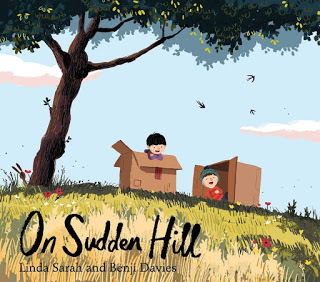
On Sudden Hill by Linda Sarah and Benji Davies –‘aboutfriendship and inclusion and the unexpected rewards reaped’.
The Tiger Who Came to Tea by Judith Kerr. ‘Love it and somehow never scary!’
How to Live Forever by Colin Thompson
Owl Babies by Martin Waddell and Patrick Benson--'I love the voices and the relationships'.
Guess How Much I Love You by Sam McBratney and Anita Jeram. 'If only because it's life affirming and timeless and at the end of the day love is all you need. And it's reassuring for yourself and your child'
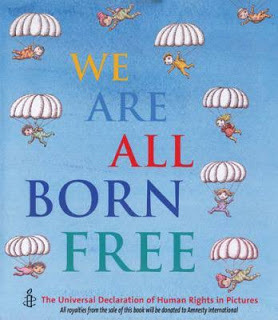
We Are All Born Free, The Universal Declaration of HumanRights –by Amnesty International
Wendel's Workshop (also Wendel and the Robots) by Chris Riddell ‘has both themes of protecting the planet and of creating a monster which is only overcome when they all get together, get creative and accept that they're all different’.
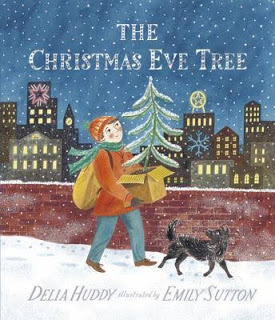
The Christmas Eve Tree by Delia Huddy and Emily Sutton. 'Festive, features a homeless boy yet quite positive and not scary...'
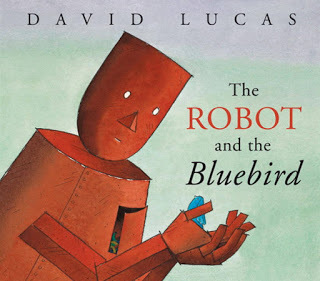
The Robot and The Bluebird by David Lucas. ‘Really got to me. Beautiful and bitter-sweet, brought a knot to my chest’. (I also felt really moved by David Lucas's honest and soul-searching approach to writing and illustrating picture books -which he discussed with us at the SCBWI Picture Book Retreat earlier this year.)
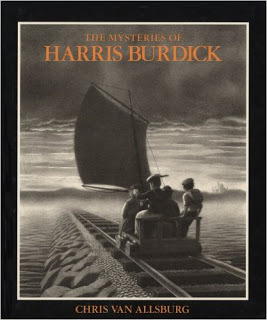
The Mysteries of Harris Burdick by Chris Van Allsburg
Manfred the Baddie by John Fardell
Little Beaver and the Echo by Amy MacDonald and SarahFox-Davies. Sweet uplifting story, gorgeous artwork.
And a couple of people posted really interesting blog post links which they've ordered books from (and so have I, since checking them out)…‘because the best thing I can do at this point is try and impart to my children the ability to feel empathy, and the best way I know how to do it is through books’.
https://pernillesripp.com/2015/10/03/great-picture-books-to-teach-theme/
https://wakingbraincells.com/2016/11/10/10-great-picture-books-on-compassion/
And I loved this recommendation by a mother with a young baby:
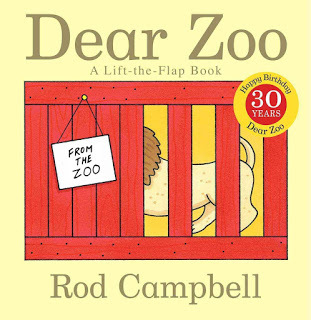
‘It's not exactly profound but we've just read Dear Zoo and he laughed his tiny little head off’.
So, some really interesting books, suggested above (and note, there are titles up there without a happy ending –which is unusual but possible –Each Kindness, Tusk Tusk, for example)…
And now it’s time for us to get on and write.
People have clearly voted for change, and if we are unhappy and unsettled about that, then we need to be out there, getting across a message of love –and not just to people who think the way we think. It doesn't have to be an issue based story, or a preachy story (as the books above testify) -but when it is written from a place of love, that will come through. There is so much for us all to do (in our personal, public and writing/creating lives) to try and make a positive difference.
We must write. I am writing. I will write.
And I am committing to taking bigger risks now –because we need to show even more love. To love loud, love louder and love the loudest we’ve ever loved. To everyone (which means there needs to be more support for school libraries and public libraries so the books can reach wherever they need to reach)–and we can do that through picture books.
And I'm massively looking forward to the upcoming SCBWI British Isles conference this weekend where we can regroup and look to the future, and do what we must do: write, draw, create.
A huge thank you to everyone who posted recommendations and comments in response to my question -regardless of your political allegiances. I've kept the quotes anonymous. And in the spirit of coming together and trying to move forward towards a time where someone who said such hateful things would never have got enough support to run, I'd love to hear from anyone with any thoughts on how we can love louder in our stories for children (and encourage real dialogue between people who have vastly different experiences of living in society, without name calling) in a way that isn’t preachy, and which other books would you recommend to encourage greater love?
Published on November 14, 2016 04:04



